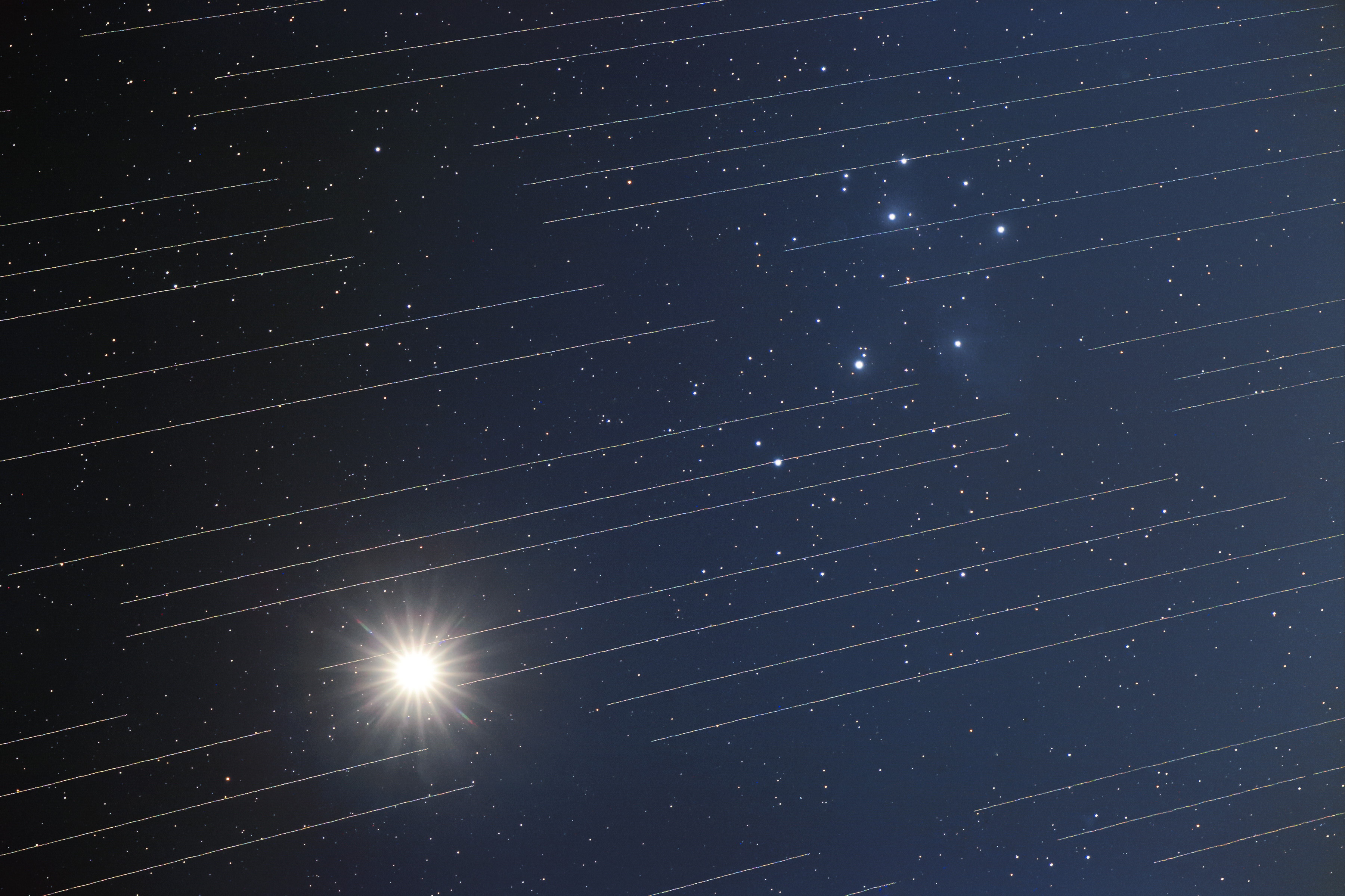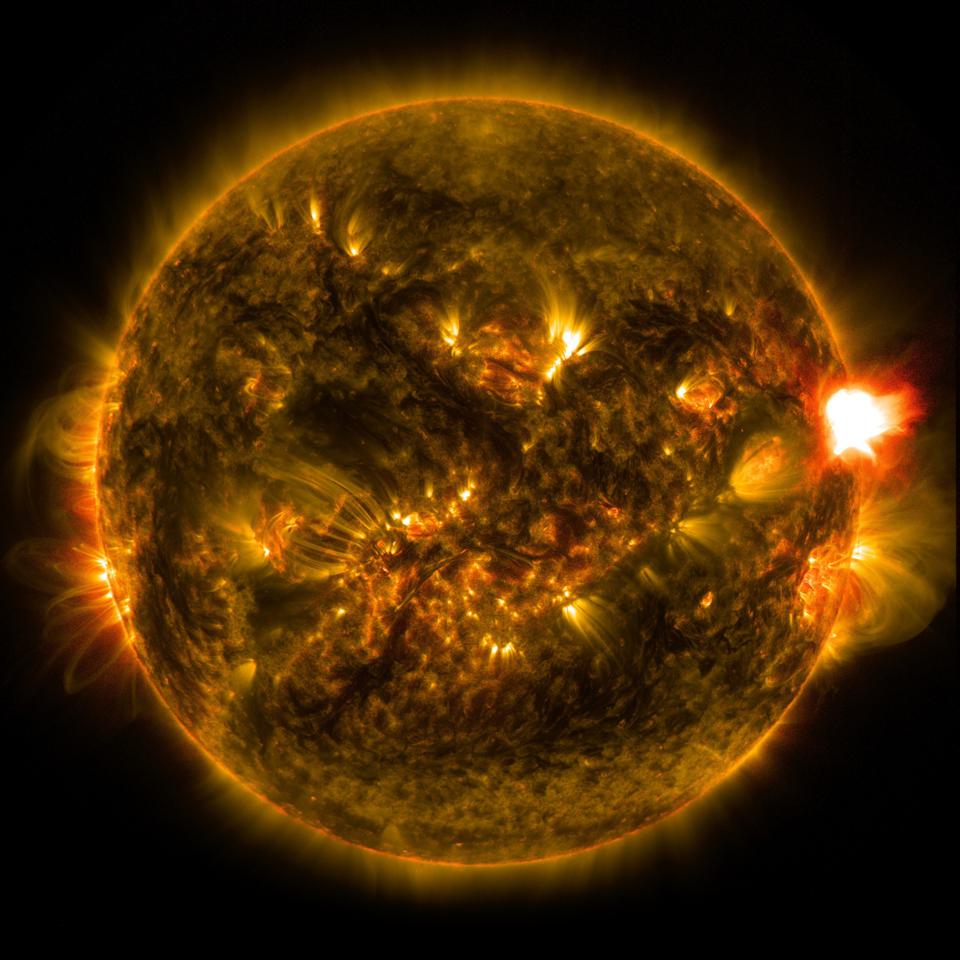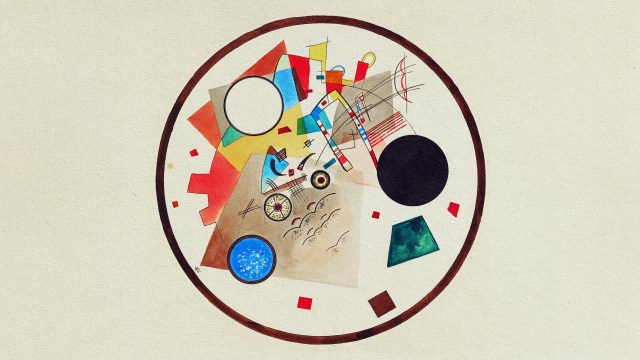Will Musk’s Starlink satellites lead to Kessler syndrome?
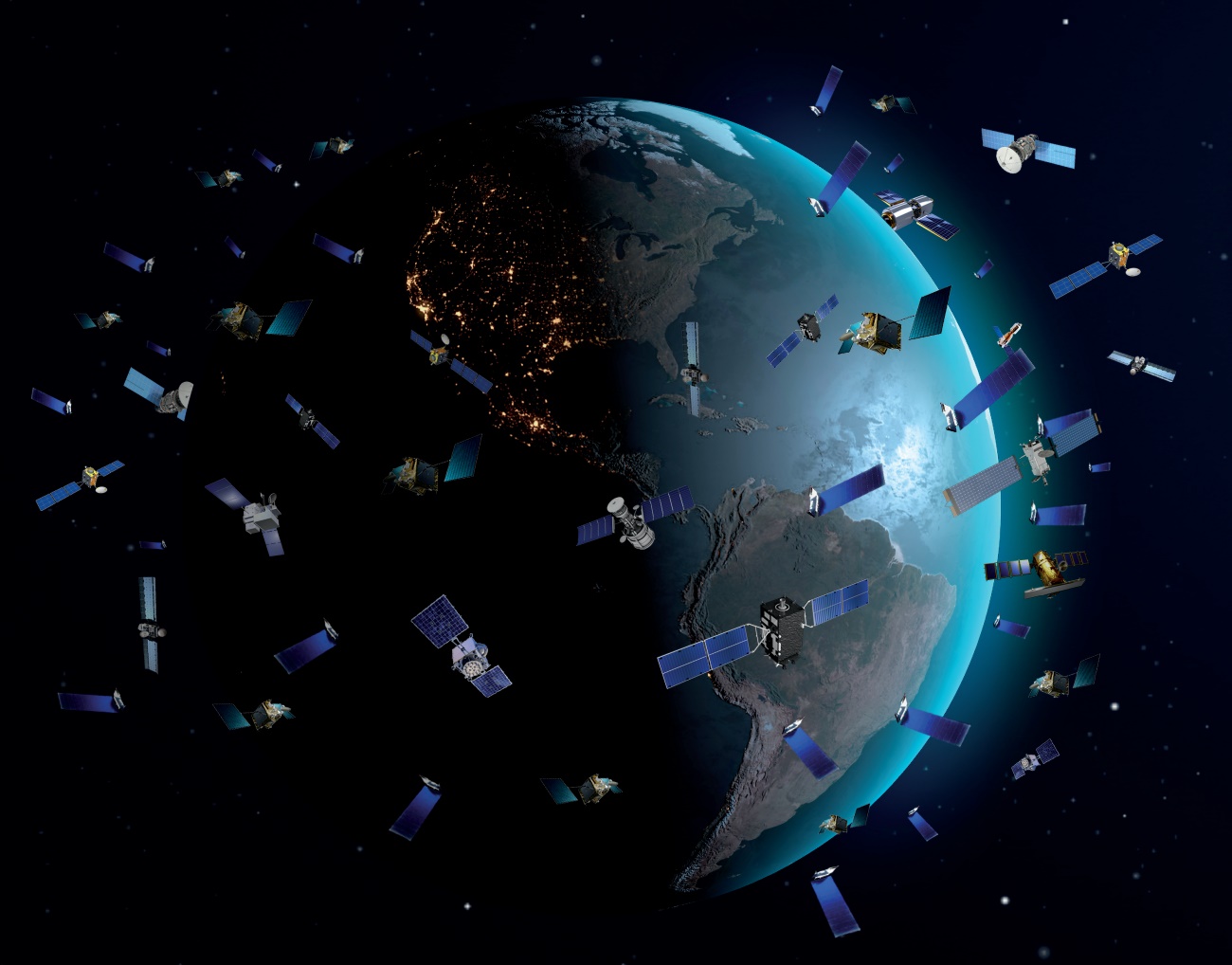
- Over the past 4 years, the number of active satellites in low-Earth orbit have increased by several thousand, with tens of thousands more planned in the coming years.
- The ultimate nightmare is that we’ll experience Kessler syndrome: where a runaway chain reaction of collisions litters low-Earth orbit with millions of pieces of debris, making new launches all but impossible.
- Currently, Starlink satellites avoid collisions through on-board AI software that tells them how to move. If that software gets knocked offline, such as by space weather, we have no protections against this catastrophe.
Over the course of the 2020s and 2030s, the night sky and the volume of space that surrounds the Earth are both poised to become very different than they’ve been for all of human history. As of 2019, all of humanity had launched an estimated total of between 8,000 and 9,000 satellites, where approximately 2,000 of them were still active back then, mostly in low-Earth orbit. As many companies now scramble to provide worldwide 5G coverage from space — led most prominently by Elon Musk’s and SpaceX’s Starlink, which has by far the most satellites — humanity is now beginning to enter the era of satellite mega-constellations.
As of today in 2023, however, there are nearly 9000 active satellites, with active Starlinks making up the overwhelming majority of them: 4755 out of the 8647 active satellites, or 55% of them. While media coverage has largely focused on only one detrimental effect so far — the damage that these satellites have already caused and are still causing to astronomy — there’s a second consequence that could be even more disastrous over the long-term: Kessler syndrome. With tens or even hundreds of thousands of satellites in orbit, a single collision could trigger a chain reaction. With the realities of solar flares, coronal mass ejections, and other forms of space weather, the era of mega-constellations may usher in a new type of natural disaster, making Earth’s orbit impassable to all future space-based missions.

The idea of Kessler syndrome is a simple one: if there are too many satellites around Earth, an unfortunate collision between any two of them could create enough debris that another collision becomes inevitable. Although there is not widespread agreement on when that point will be reached, it’s widely recognized that greater numbers of larger satellites greatly increases this risk. With Starlink alone proposing a total of 42,000 satellites in three different orbital shells and many other companies working on following suit, the danger of Kessler syndrome is poised to increase by orders of magnitude over the current decade: the 2020s.
In prior years, satellites were launched into orbits that were tracked and knowable, with occasional collisions only occurring due to inactive satellites whose orbits were decaying due to atmospheric drag. With mega-constellations, however, the motions of these orbiting satellites will no longer be manually controlled by people who are consistently monitoring them for collision avoidance. Rather, artificial intelligence has now entered the picture, fully automating the collision avoidance problem. While many look upon this as a tremendous feature, in reality, it poses a novel and catastrophic danger to all of our current space exploration and space science missions, from Earth-monitoring satellites to planetary exploration and more.

With so many objects in orbit at the same altitude, artificial intelligence will be required in order to constantly leverage the on-board thrusters to accomplish three main goals:
- to ensure the correct, continuous spacing of the satellites to provide the necessary internet coverage,
- to boost any satellites that experience the effects of orbital decay, compensating for the drag of Earth’s atmosphere,
- and to perform any necessary boosts or orbital alterations to avoid collisions with other satellites, including other members of the same megaconstellation but also any other satellites or spacecraft that pass through those orbital shells.
This last point is absolutely critical. Any two orbits at the same altitude always have two points where they will cross, where satellite drift makes such a collision inevitable, given enough time. Only by having the satellites correct their own courses in real-time can the operators of these satellites ensure a collision-free scenario, and that will only work with uninterrupted, 100% continuous uptime of these collision avoidance systems.
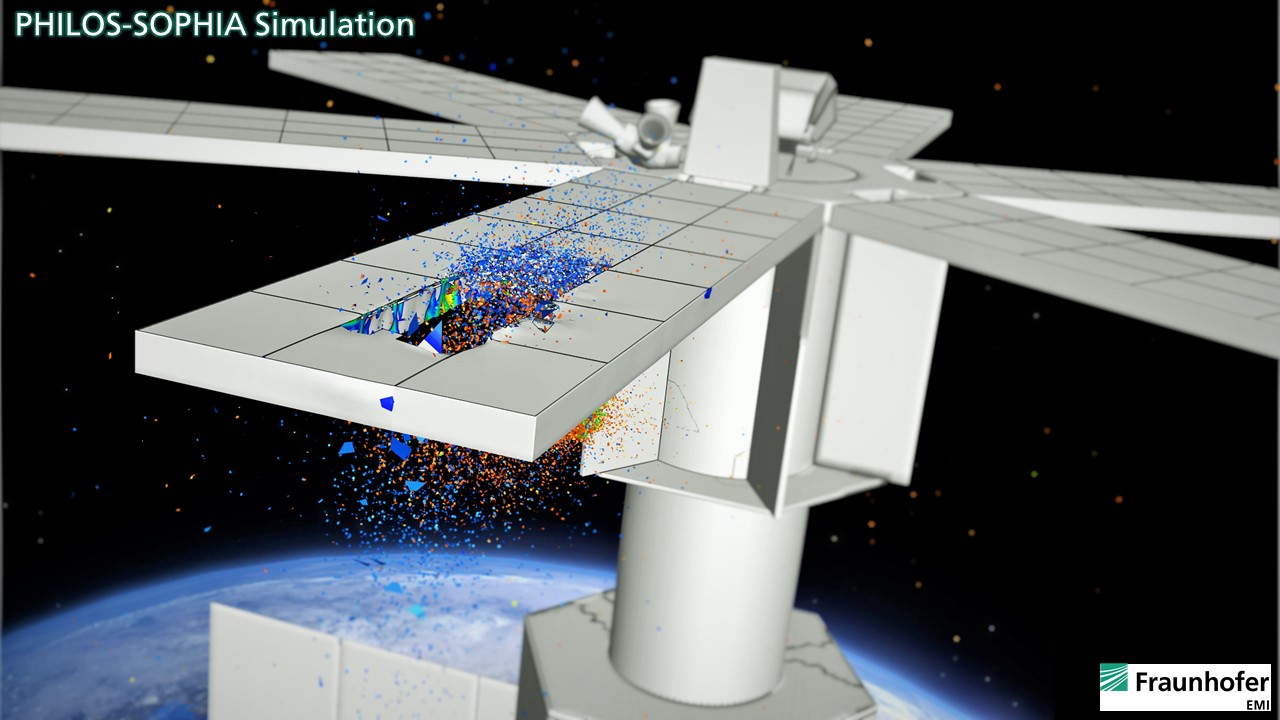
That’s why the current plan of mitigating satellite collisions comes along with a potentially catastrophic scenario: what if the satellites are rendered non-responsive by some event? If constant orbital corrections are needed in order to avoid collisions with other satellites, the worst thing that could happen would be a scenario that paralyzed the satellites and made them unable to respond to not only the artificial intelligence systems on board, but to any commands sent to them: even manual commands.
This is not some science-fiction horror scenario, but something as inevitable as the Sun itself: space weather. Events like solar flares, coronal mass ejections, and even the plain old solar wind all send charged particles away from the Sun. When they happen to get sent on their way toward planet Earth, our surface is protected by our world’s magnetic field and our atmosphere. The danger to humans or any biological organism is essentially zero, with the largest effect that commonly occurs being a spectacular looking auroral display. Even if the magnetic fields of the Sun and Earth are aligned in such a way that enormous numbers of charged particles impact our planet, the upper atmosphere is dense enough that none of these solar wind particles will strike humans, plants, or even birds in the skies. The risk to living creatures is essentially zero.

But in space, even in low-Earth orbit, the atmosphere offers no protection, and our planet-wide magnetic field offers no guarantee of redirecting these particles away from whatever satellites may be present at any altitude: in geosynchronous orbit, medium-Earth orbit, or the most densely populated region of all, low-Earth orbit. According to NOAA:
“Solar Energetic Particles (energetic protons) can penetrate satellite electronics and cause electrical failure. These energetic particles also block radio communications at high latitudes during Solar Radiation Storms.”
Right now, the Sun is gradually approaching the peak of its periodic solar cycle. On timescales of 11 years, the number of sunspots — which correlates directly with the odds of flaring activity and coronal mass ejections — goes from essentially zero (a quiet Sun) to solar maximum and back to zero again. Back in 2018-2019, we were just leaving the previous solar minimum. But now, sunspots, solar flares, and other space weather events are on the rise, with the next maximum anticipated to occur in 2024 or 2025 and another solar maximum headed our way every 11 years after that.
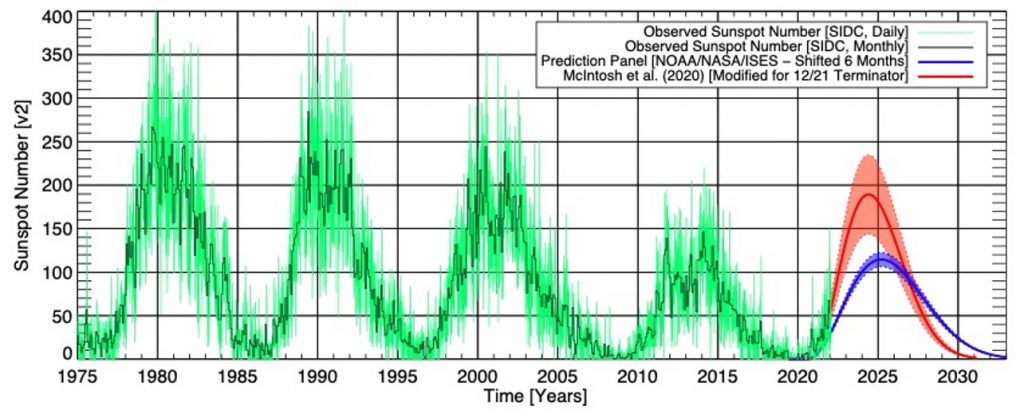
There’s a tremendous danger to satellites whenever this type of space weather, of energetic charged particles made of either bare protons or more complex atomic nuclei, impacts them. Energetic protons, when they pass through the electronics components of a satellite, can:
- induce currents,
- cause electrical shorts,
- and can quite easily cause various types of electrical failure.
If this happens to a satellite spontaneously, where no precautions have been taken prior to the space weather event impacting them, they will be unable to adjust their course entirely: via artificial intelligence or any other means. If they cannot adjust their course, the question of any two of these satellites colliding becomes a Russian roulette-like game of chance, where there are likely to be a series of near-misses before the inevitable — an in-space collision between two of them — occurs. With enough satellites and enough time, this cannot be avoided without additional mitigations, given the limits of current technology and infrastructure.
The worst-case scenario, and this scenario gets worse with every new, massive satellite that goes up (and every single Starlink satellite of all generations is “large” by this metric), is that each collision will create new debris, increasing both the likelihood and frequency of in-orbit collisions. The nightmare scenario of Kessler syndrome is that in short order, potentially just weeks or months after the first collision, the region around Earth will become a debris field, with a significant percentage of existing satellites getting destroyed by the series of impacts that will occur.

At present, every space disaster that has occurred in human history, including collisions between satellites and also failed missions that have exploded or malfunctioned once already in space, means that there are perhaps up to a few hundred thousand pieces of space debris the size of your fingernail or larger. These are already hazardous to our existing satellites and space exploration operations, with one of them having collided with the International Space Station just a few years ago, cracking a window in the process.
But the scenario would be very different with hundreds of thousands of large satellites in low-Earth orbit. Under those conditions, a single collision between two large satellites could set off a catastrophic chain reaction like humanity has never seen. In short order, the number of pieces of space debris could rise into the tens of millions, impacting satellites not only in low-Earth orbit but in medium-Earth orbit as well.
The first company whose communications satellites cause such a disaster would likely impact every other communications company’s satellites, to say nothing of military and scientific satellites presently in orbit. Not only will satellite technology become an impossibility for at least decades and perhaps several millennia, until the orbit naturally clears, but all “routine” space launches will necessarily come along with an enormous gamble.

The greatest danger that the Sun poses to Earth today is a large-scale coronal mass ejection, which — if it heads right for us with the wrong magnetic field orientation — could lead to a wide-scale electrical catastrophe that could knock out power grids all over the Earth, starting fires and causing trillions of dollar in damage to our infrastructure.
However, a series of solar telescopes and observatories offers a potential solution. By monitoring the Sun:
- from Earth, with observatories such as the NSF’s Inouye Solar Telescope,
- from in orbit around the Sun, such as with NASA’s Parker Solar Probe and ESA’s Solar Orbiter,
- from the L1 Lagrange point, with observatories like NASA’s SOHO and Solar Dynamics Observatory,
- and from in orbit around Earth, like with Japan’s Hinode satellite,
we can monitor space weather as soon as it gets ejected from the Sun, assessing the risk to our planet while the space weather is on its way, before any satellites are impacted.
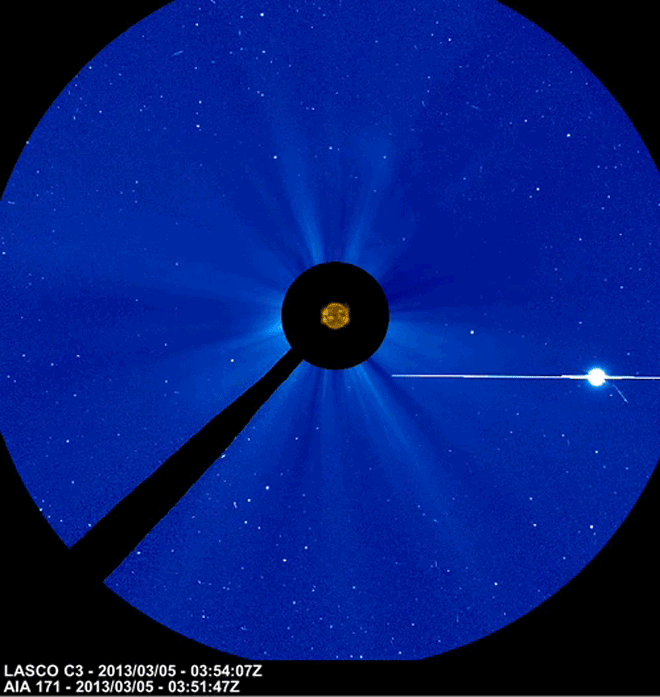
This type of infrastructure, specifically designed for space weather monitoring, can get us up to three or four days of lead time for most space weather events, and even ~17 hours of advance notice for the most powerful, fastest-moving space weather events of all. Whereas a coronal mass ejection needs to possess specific properties to pose a risk to Earth’s infrastructure, satellites in orbit above Earth are in a far more precarious position, and are vulnerable to:
- coronal mass ejections,
- solar flares,
- and even just the plain old solar wind,
under a wide variety of circumstances.
In order to ensure that a solar flare directed at us doesn’t lead to Kessler syndrome, the following precautions could prevent an otherwise inevitable disaster.
- When a solar flare is emitted from the Sun, all mega-constellations of satellites must enter a pre-planned “safe route” orbit.
- These “safe routes” would be passive orbits that are explicitly designed to maximize the distance between satellites for the largest amount of time into the future.
- Such an intervention could buy us, at the very least, years of time until a collision occurs: enough time that even in the worst-case scenario, we could launch an emergency mission to intercept and de-orbit any broken satellites.
However, no such failsafe has been built into the infrastructure of any satellite megaconstellation from the beginning, including for Starlink. There is no “safe mode,” and so until one is put into place, operating these satellites under the status quo will always carry along a risk of a space weather event-induced collision or chain reaction of collisions.

If we fail to prepare, the only option we’ll have is to come up with a clever name for this easily-avoidable catastrophe: I suggest something like “Flaremageddon” for these purposes. Such a natural disaster scenario becomes easy to envision. Imagine that it’s 2035, and we have several tens of thousands of new mega-constellation satellites up there, while at the same time, a series of sunspots appear around the Sun’s equator. A magnetic reconnection event occurs, launching an X-class solar flare with a coronal mass ejection right at Earth. The magnetic field of the Sun, relative to Earth, is oriented so that a geomagnetic storm occurs, knocking out some major electrical grids in the process.
But in space, a large fraction of satellites get bombarded by these energetic particles from the Sun, causing them to become non-responsive. 8 days later, the first satellite-satellite collision occurs. While humanity scrambles to respond appropriately, a second collision occurs, triggering the beginning of a chain reaction. By 2037, the International Space Station is forced to be abandoned, our Earth-monitoring satellites in low-Earth orbit are knocked offline, and the Hubble Space Telescope is destroyed. Tens of millions of pieces of debris then fill low-Earth orbit, making any subsequent launches impossible without the launch vehicle itself experiencing a number of impacts from this debris.
It’s an entirely avoidable disaster, but unless we prepare now, in advance of any foreseeable disasters, we run the risk of mortgaging our entire species’ future in space, all because we failed to take the necessary precautions.
